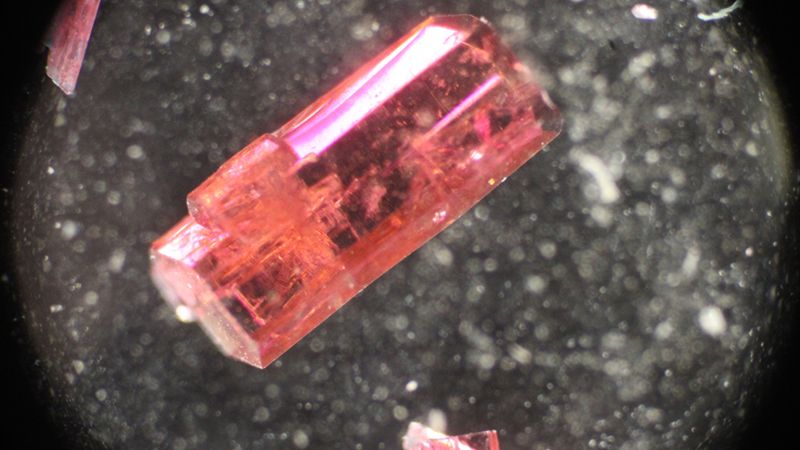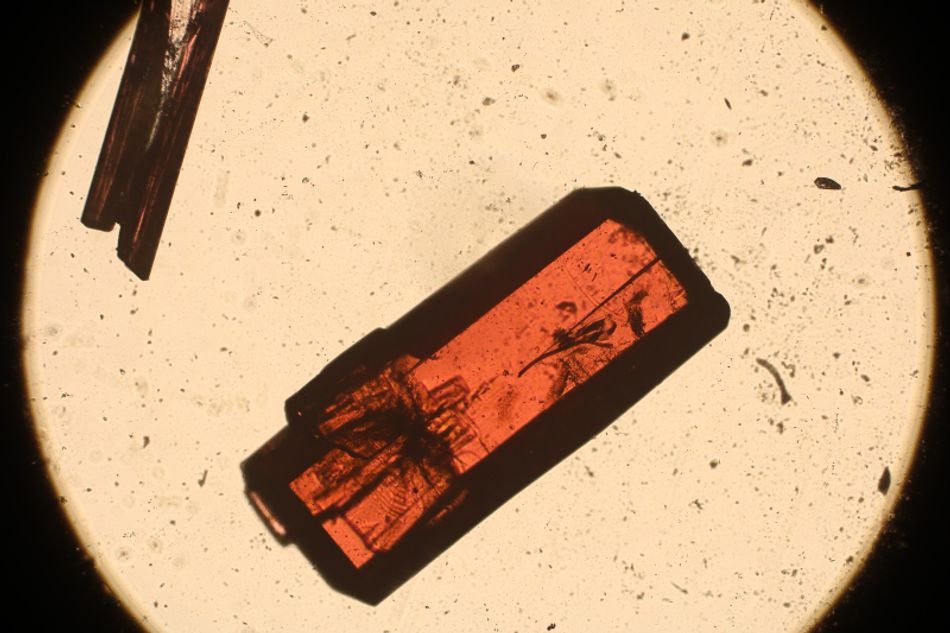New Composite for Ultrafast Durable Sensors
Researchers from ITMO and Almazov National Medical Research Centre have created a new metal-organic framework-based material that can be used to make fast-acting, durable sensors for detecting water and toxic molecules.

The new MOF in crystal form. Photo courtesy of the researchers
This article was first published on
news.itmo.ruResearchers from ITMO and Almazov National Medical Research Centre have created a new metal-organic framework-based material that can be used to make fast-acting, durable sensors for detecting water and toxic molecules. The structure, described in an article in Materials Horizons, can instantaneously detect changes in humidity and identify dimethylformamide, a dangerous compound often used in production.
Color-changing sensors are commonly used in production environments to quickly find toxic substances and monitor changes in humidity. These sensors are based on the so-called solvatochromic materials, which change color depending on the solvent environment. Currently, most solvatochromic sensors are created using dyes and inorganic salts. However, these materials have drawbacks: they cannot be reused, are toxic to living organisms (can cause allergies and accumulate in the body), and react to a wide range of compounds, which means they aren’t always capable of detecting a specific substance.
One possible alternative are metal-organic frameworks (MOFs). These are highly ordered hybrid structures composed of organic molecules and metal ions. Their chemical composition can be varied in order to adjust their physical and chemical properties.
Until recently, most solvatochromic MOFs weren’t durable: at best, they lasted for dozens of color change cycles before the structure degraded. Additionally, they changed color slowly (ranging from several days to one minute) when interacting with a solvent, and there was a lack of research to support their biocompatibility.
The team from ITMO succeeded in developing a highly durable and biocompatible solvatochromic MOF based on cobalt ions and trimesic acid; the new MOF can quickly detect water and toxic compounds. Compared to other materials, the MOF is selective: in experiments with a range of solvents, it reacted only to two substances, turning pink when interacting with water, and violet – when coming into contact with the toxic dimethylformamide.
The new structure reacts to these two substances instantaneously, in 0.1 seconds, which is 600 times faster than existing MOFs. At the same time, the MOF is durable – it maintains a stable structure at temperatures up to 300 °C and can sustain more than 50 drastic color-changing cycles. Such rapid color changes were achieved by heating the material with infrared laser radiation.

Once the MOF was produced, researchers from Almazov National Medical Research Centre stepped in to test its biocompatibility. In their experiments, they introduced the MOF into the organs of the zebrafish (Danio rerio). Embryos of the species were kept in a MOF-based solvent and then tested for their survival rate and behavior. These studies demonstrated that the median lethal dosage for adult species was 6 mg/kg of body weight, which indicates a relative safety of the substance when administered orally. Moreover, for embryos, the median lethal concentration was established at 0.81 mg/ml in the aqueous environment, which also indicates a low level of toxic effects in the early stages of development.
Thanks to its high biocompatibility, the new MOF can be used inside desiccators – containers for moisture-sensitive chemicals and goods.
Based on the new material, it’s possible to create a detector for water molecules. In the future, it could be applied in chemical production, where the presence of water byproducts can be critical. It can also be used to detect toxic dimethylformamide, a harmful substance used in the oil industry and to produce leather or dyes. Dimethylformamide doesn’t have a distinct color or smell, which is why it can only be detected with dedicated devices.
“Our study is a step forward in chemical sensors, as we were the first to demonstrate the fastest, highly durable, and biocompatible MOF-based sensor. In the future, we will keep researching solvatochromic materials. We are also planning to collaborate with an engineering team to develop a prototype for the detector that will be used at production sites,” concludes the paper’s first author Maria Timofeeva, a junior researcher at ITMO